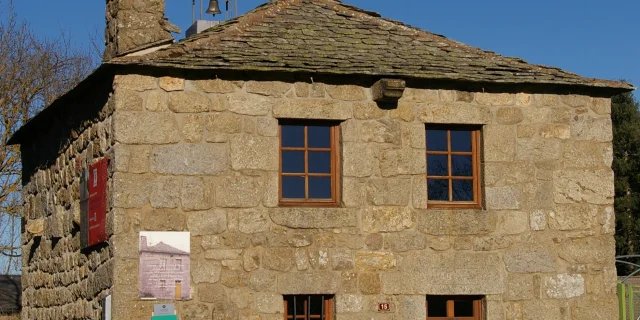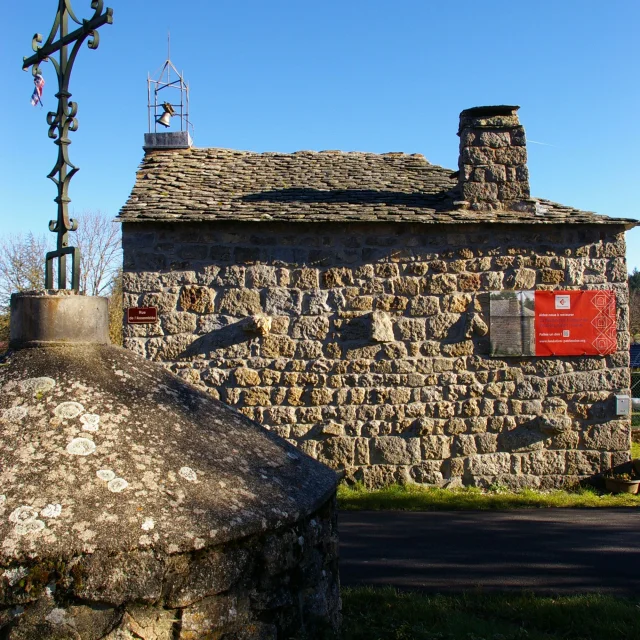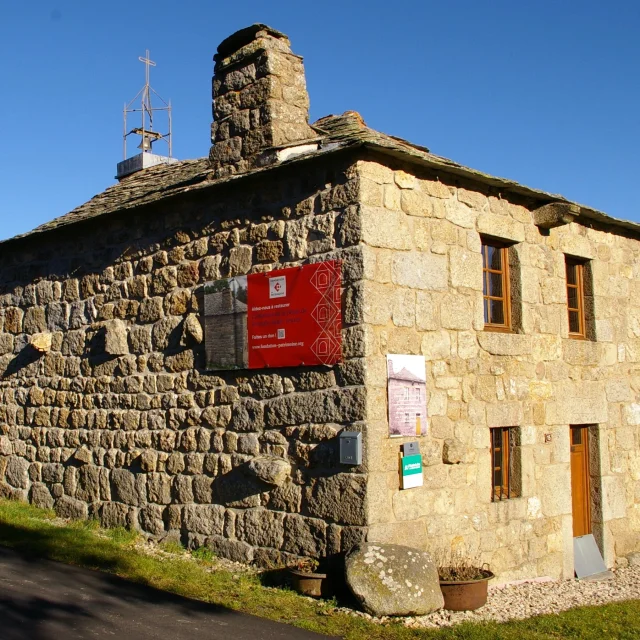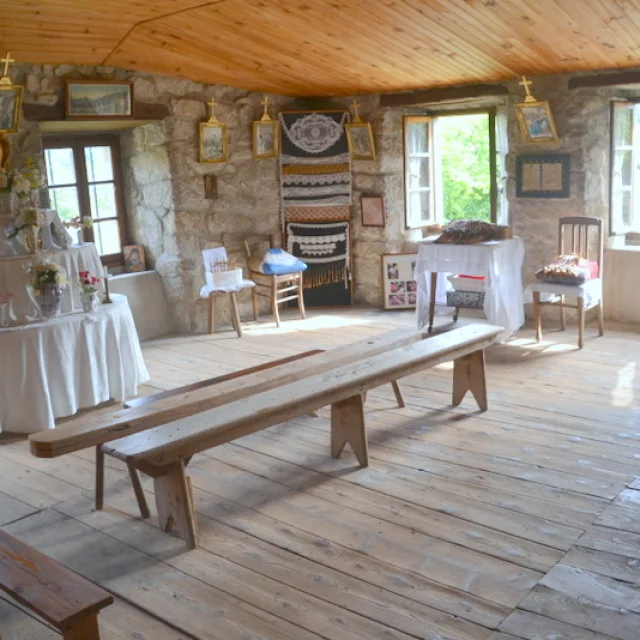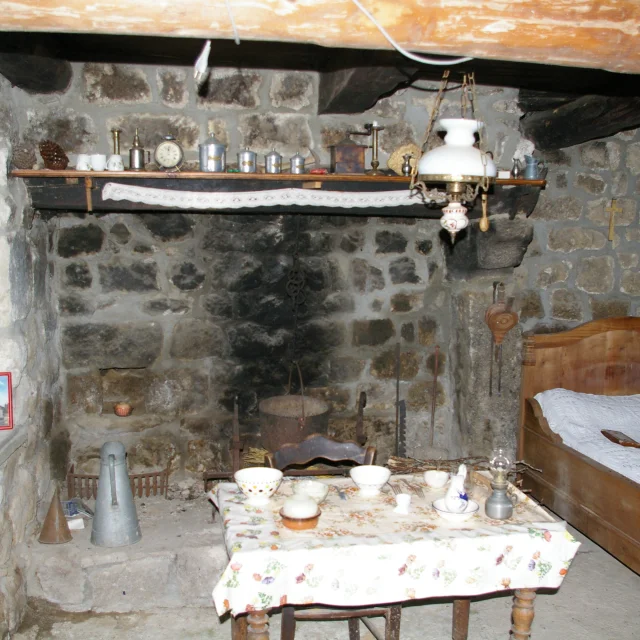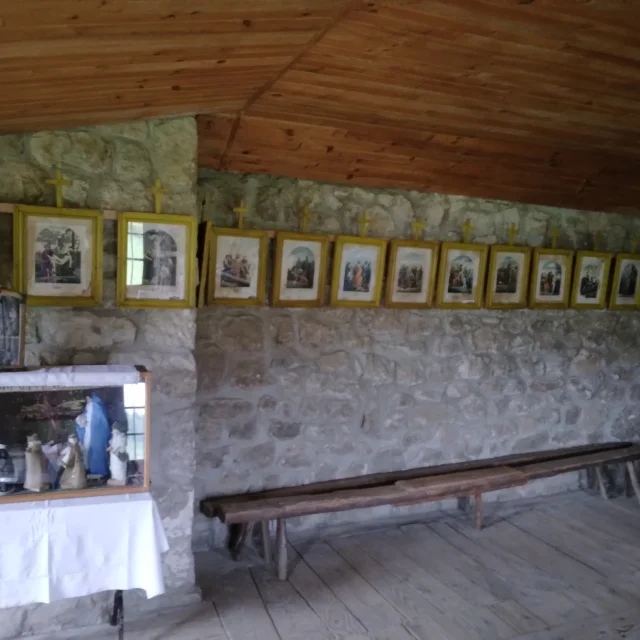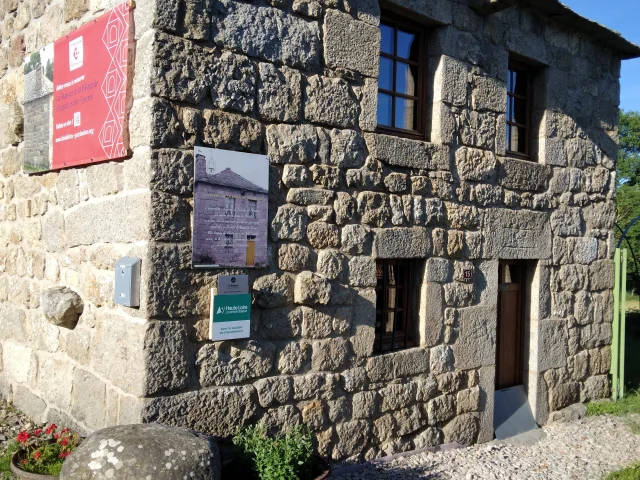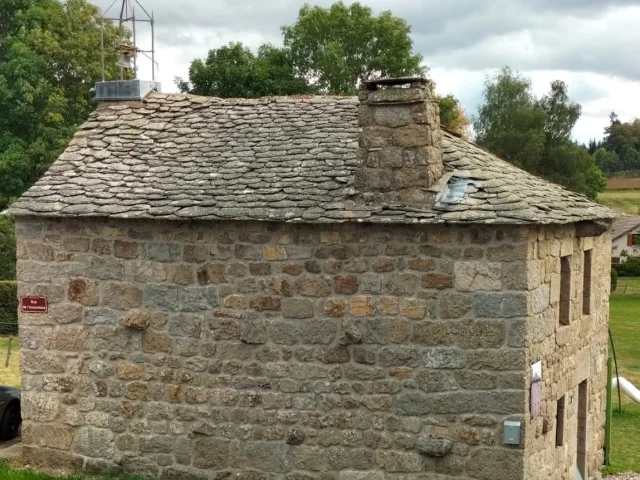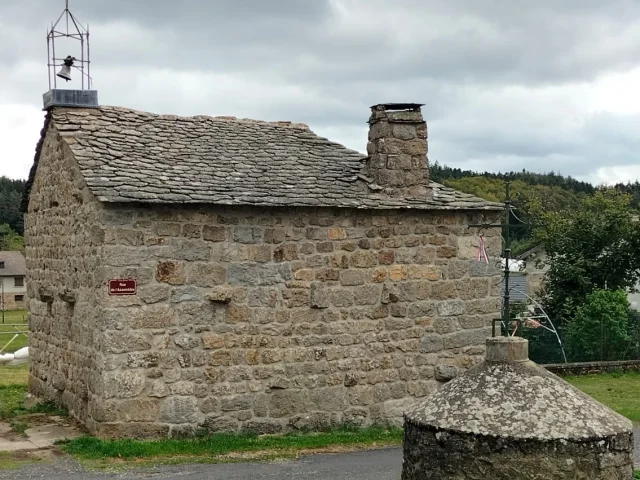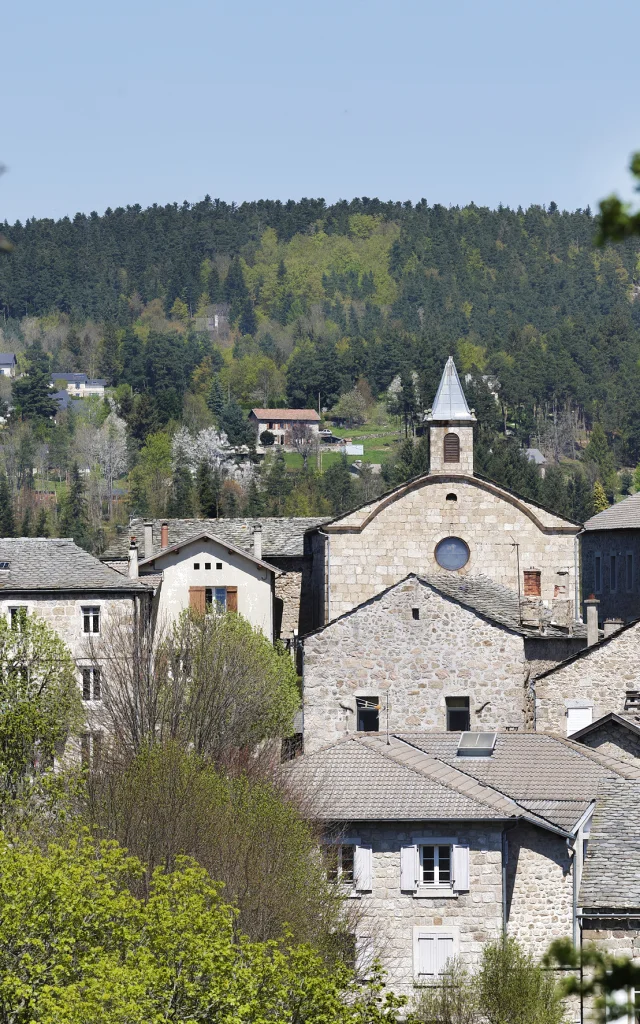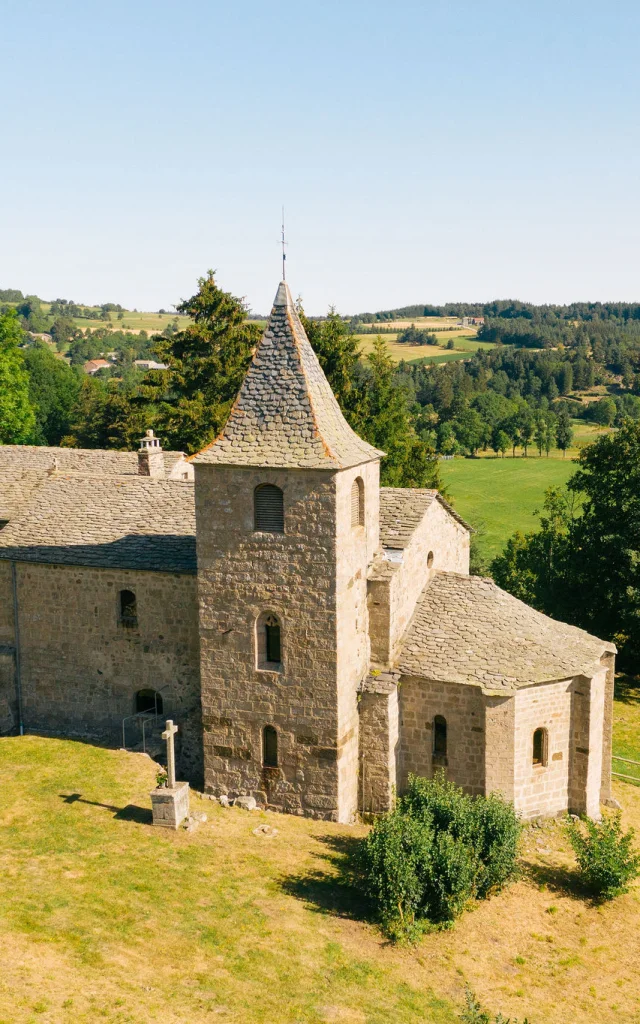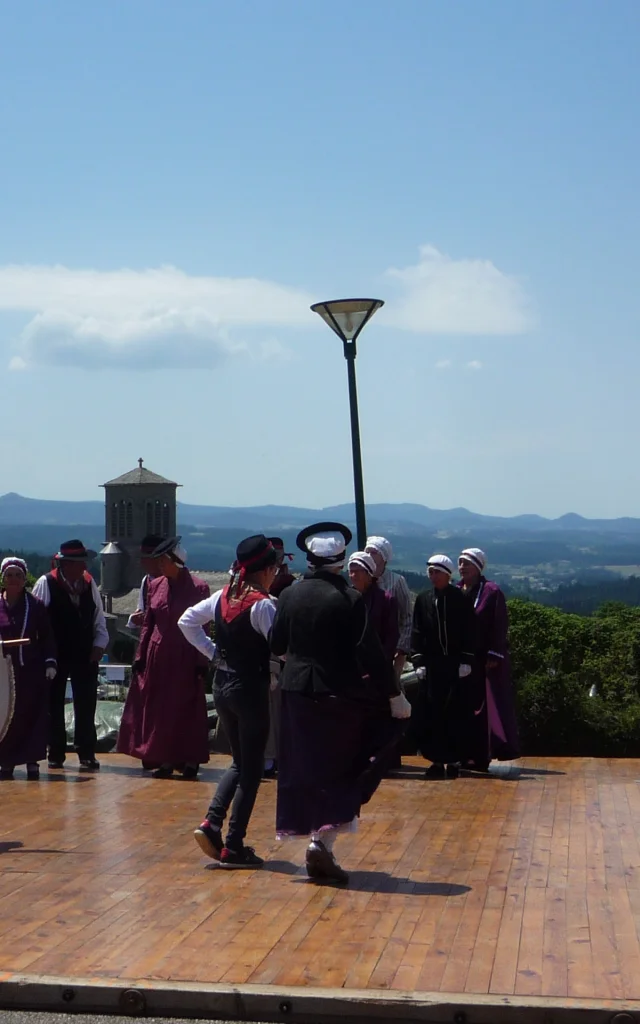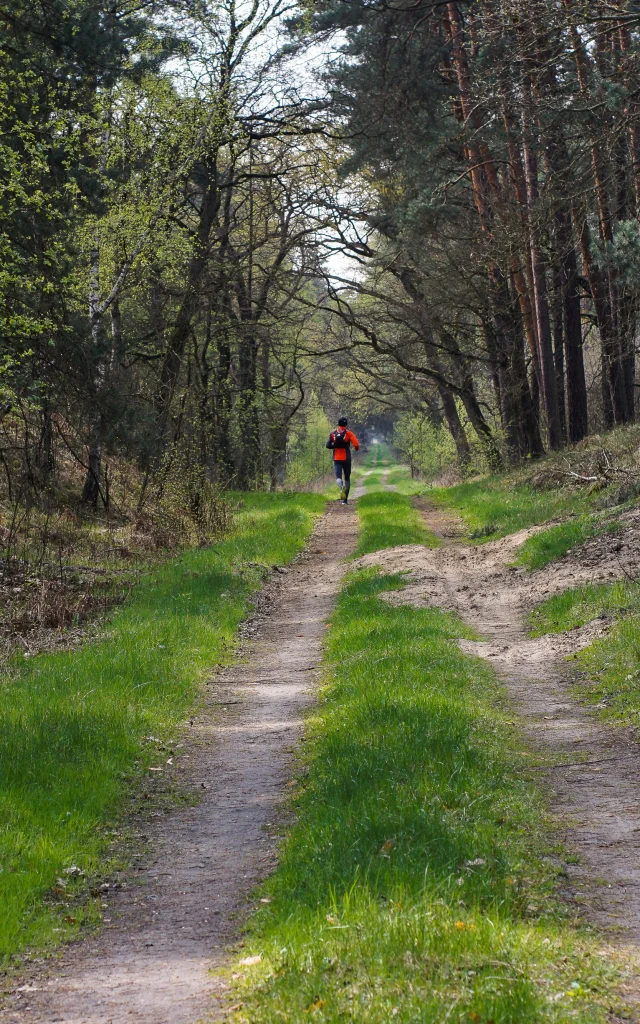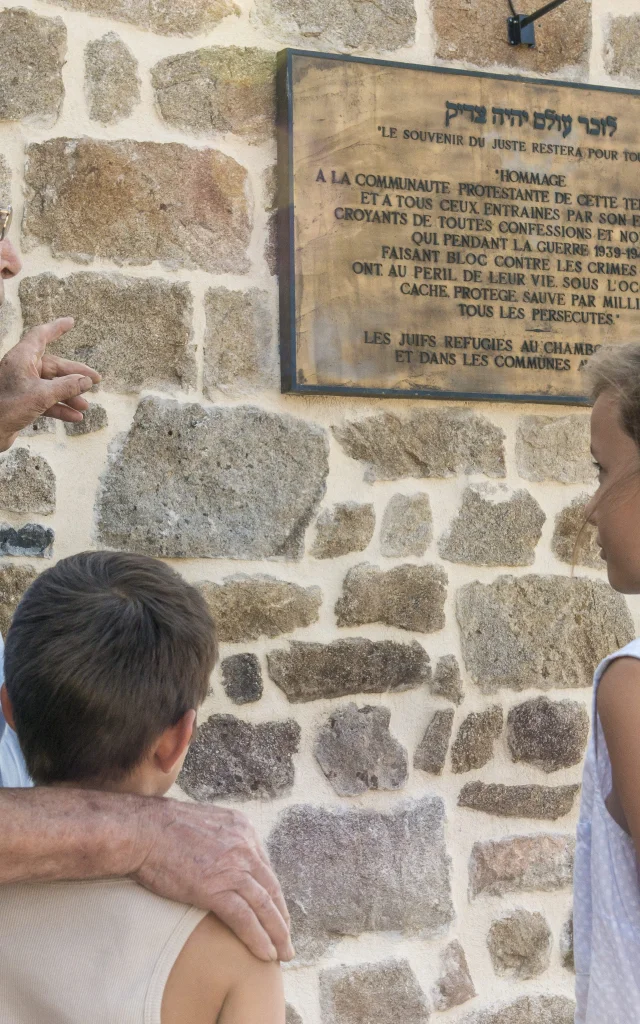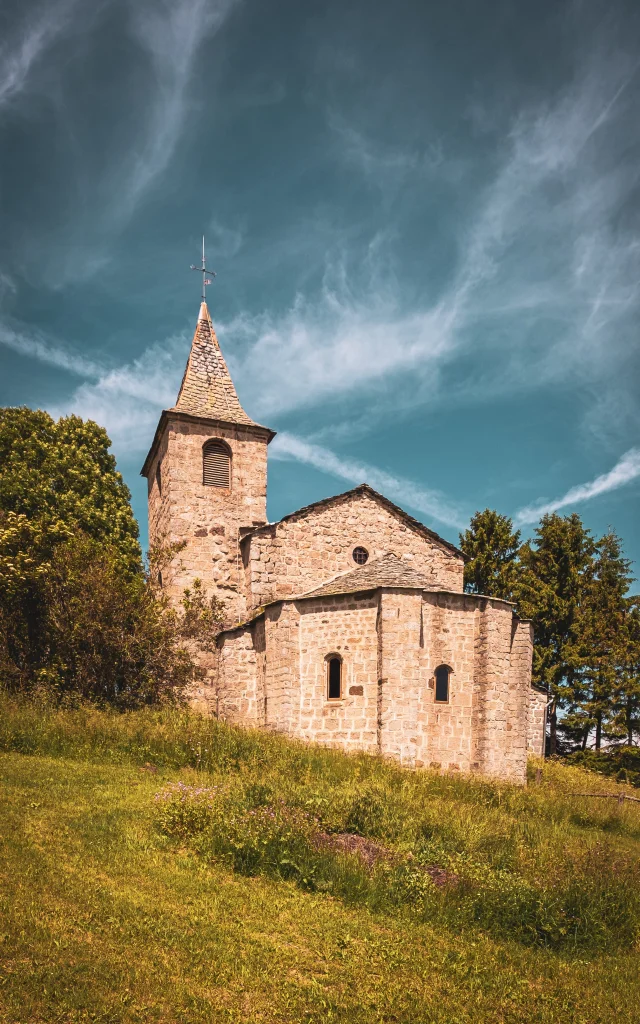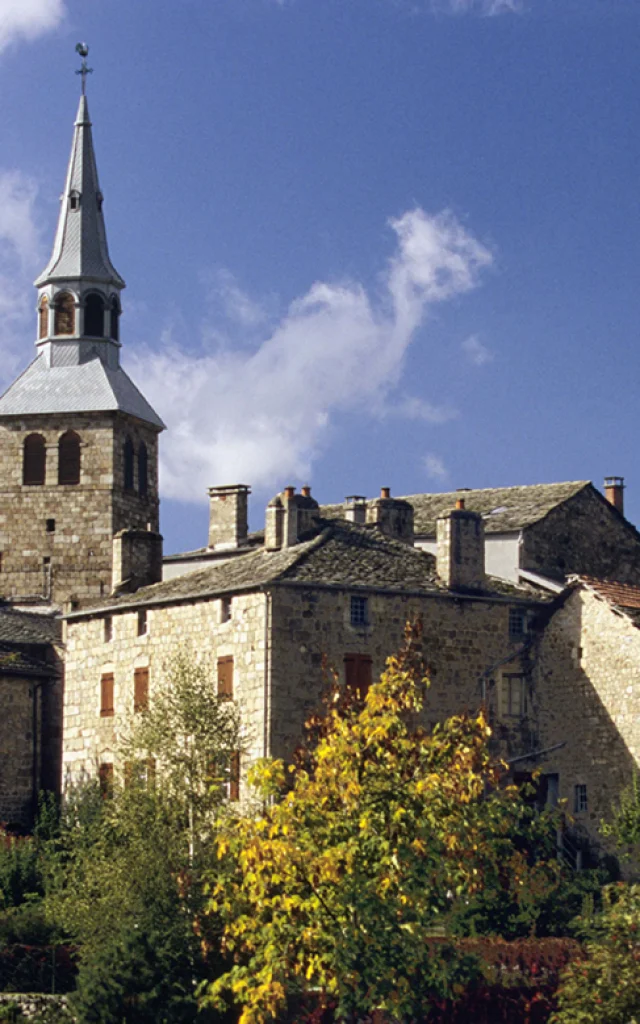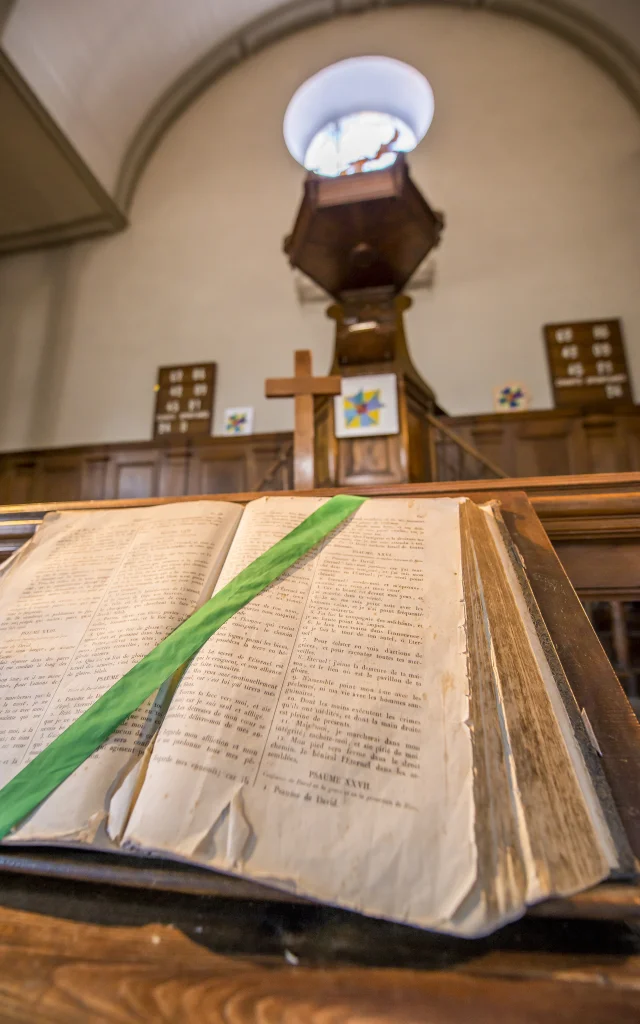Beyond its distinctive architecture, the house of the beata embodies a living heritage, where catechism, lace-making and evening gatherings have forged lasting bonds within the community.
Many locals remember the month of Mary. They took part as children in the 1950s and can share these memories.
This modest building, which can be spotted by its bell tower facing a communal well topped by a cross, is located in the heart of the hamlet of Pouzols (commune of Saint Jeures).
It’s typical of the “beate” or assembly houses that still dot the Velay countryside today.
Stepping inside the Pouzols beate house takes you back into local history…
We learn how these devoted beatitudes played an essential role in village life.
- The ground floor served as a modest dwelling for the beate. A number of pieces of furniture and objects have been assembled to evoke the Spartan life she led.
A fireplace, a cooking pot suspended from a rack, candlesticks, a boat bed, a chest – a reconstruction that lets us imagine what life was like in the house of the beate. - Upstairs, the layout recalls the three essential domestic functions performed by the beates: hostess, country schoolteacher and instructor in the art of lacemaking. The room served as a chapel, classroom and workshop.
Beates of yesteryear, who are you?
The origins of the Béates go back to 1668, when Anne-Marie Martel, a generous young woman from the bourgeoisie of Le Puy-en-Velay, with the help of Abbé Tronson, created the congregation of “demoiselles de l’instruction” to help and instruct in the Christian faith the poor girls of the town, particularly the young lace-makers from the countryside.
The need to extend this apostolate was soon felt. The congregation formed auxiliary “béates” who, under the supervision of the parish priests, set up in the hamlets.
Covered in her white or black bonnet, the beate settled into her modest dwelling without further ado, thanks to the villagers who had provided the land and materials to build the house with its characteristic bell-tower.
The beata fulfilled the many functions associated with the religious and social life of the village. In return for her commitment, the villagers were to provide her with regular supplies of potatoes, bacon, cheese – the basis of her frugal diet – and firewood.
In the second half of the 19th century, there were over 750 beate houses in the Velay region.
Today, many are still standing, perpetuating the memory of the beates . But few can be visited, and many are in a state of peril. The house of the Pouzols beate is particularly well furnished and decorated. It has its own Stations of the Cross, and the minutes of the erection of the Stations of the Cross signed by the bishop formalize the existence of the house of the beate.
